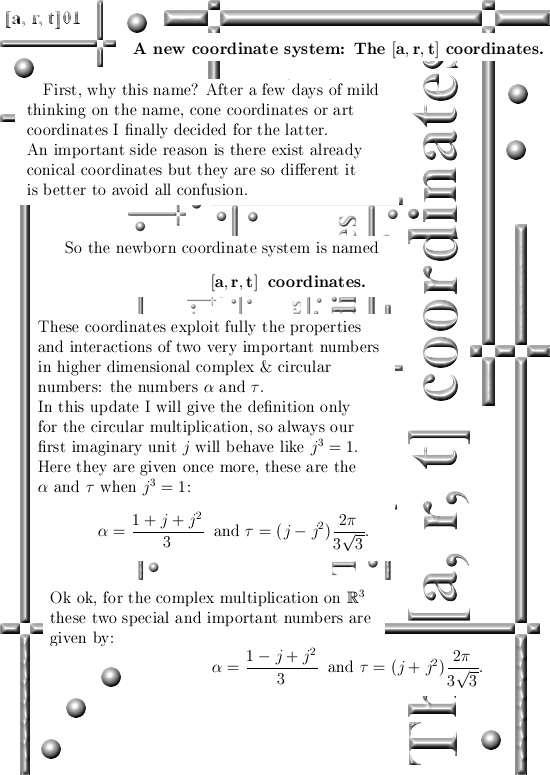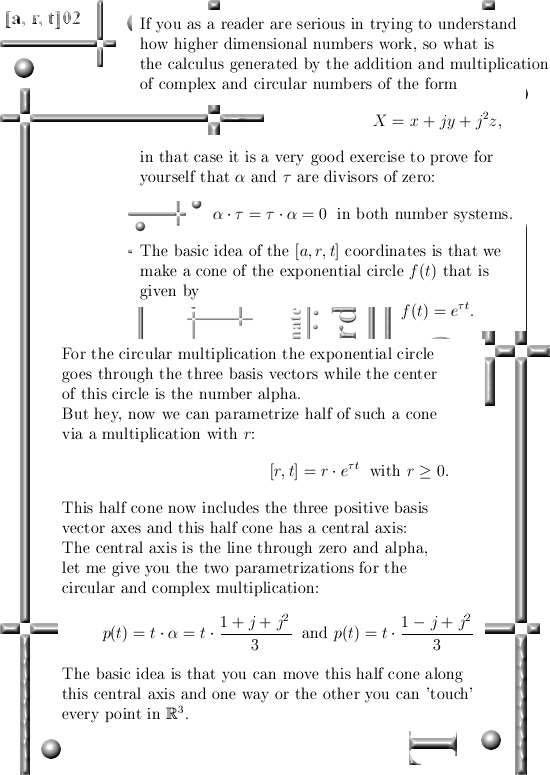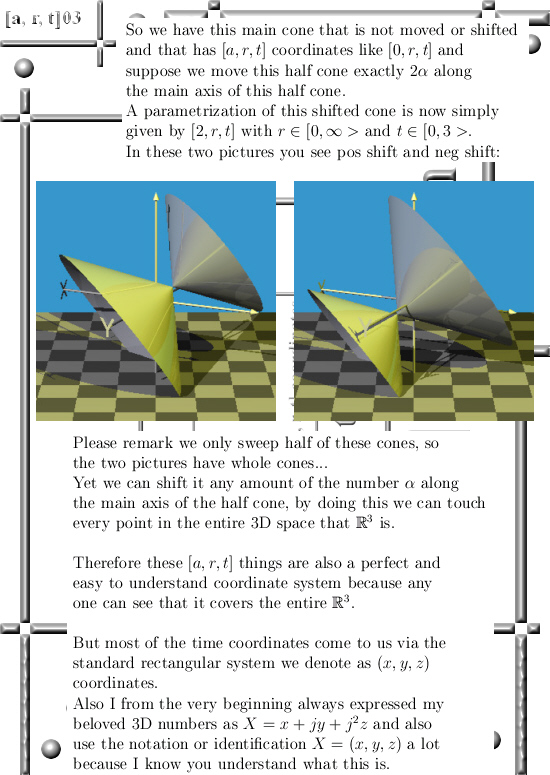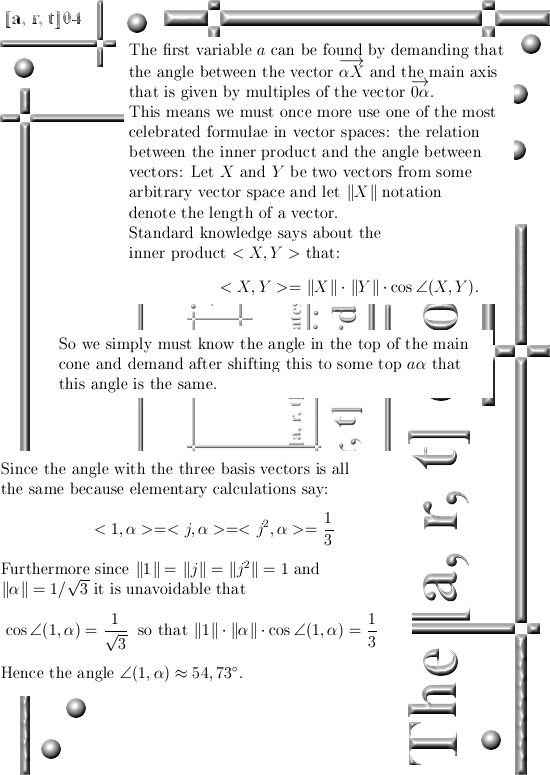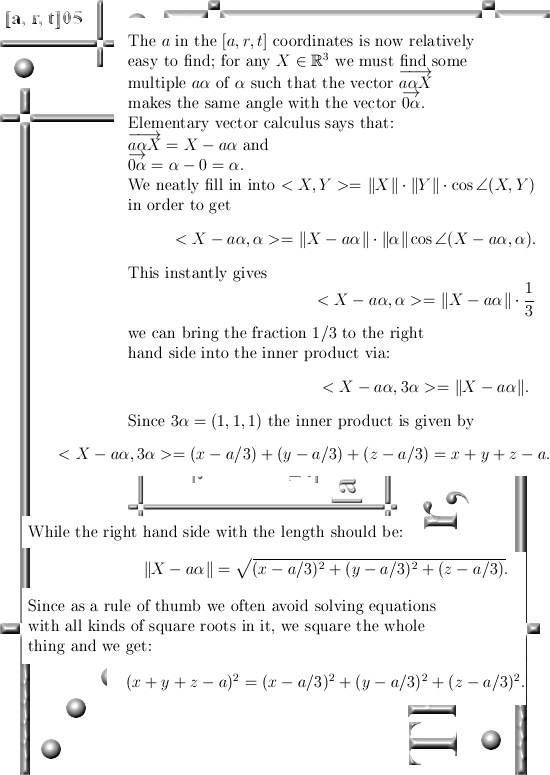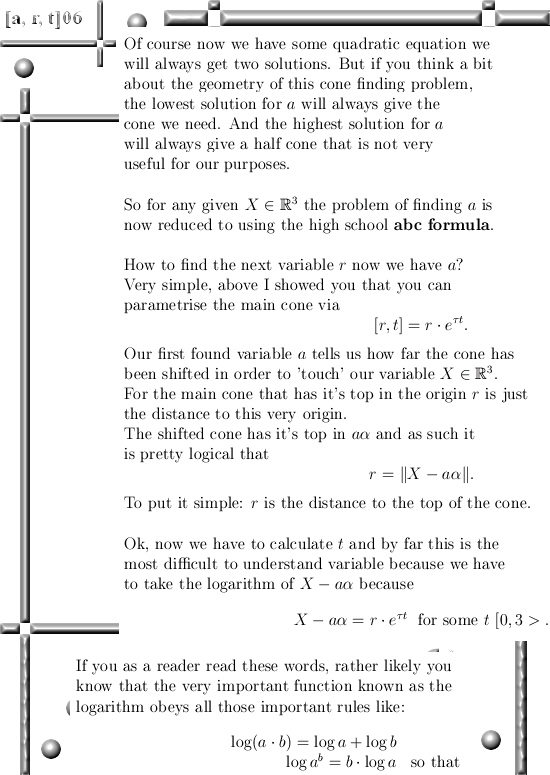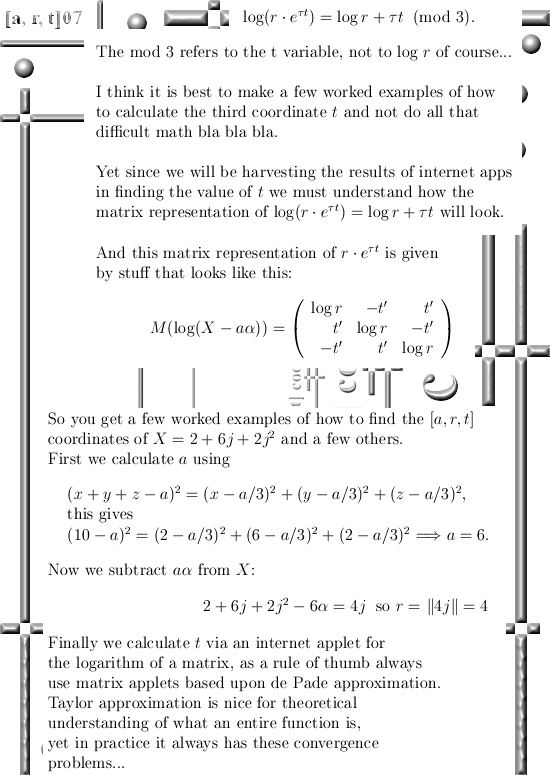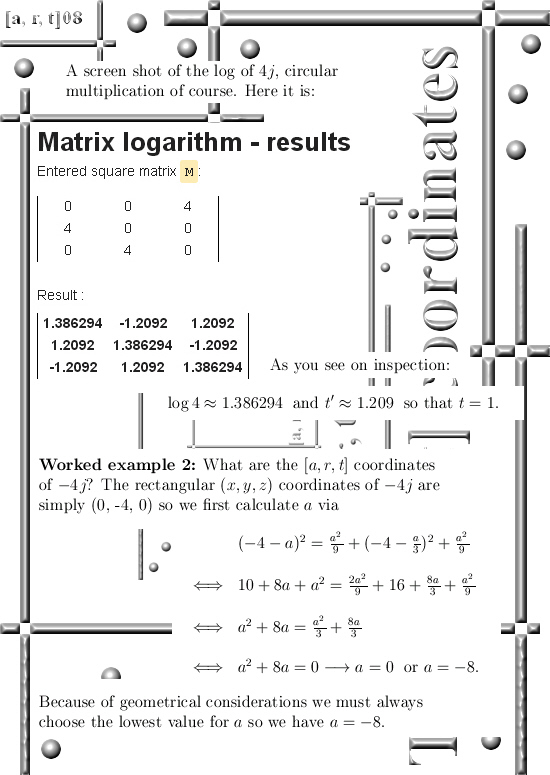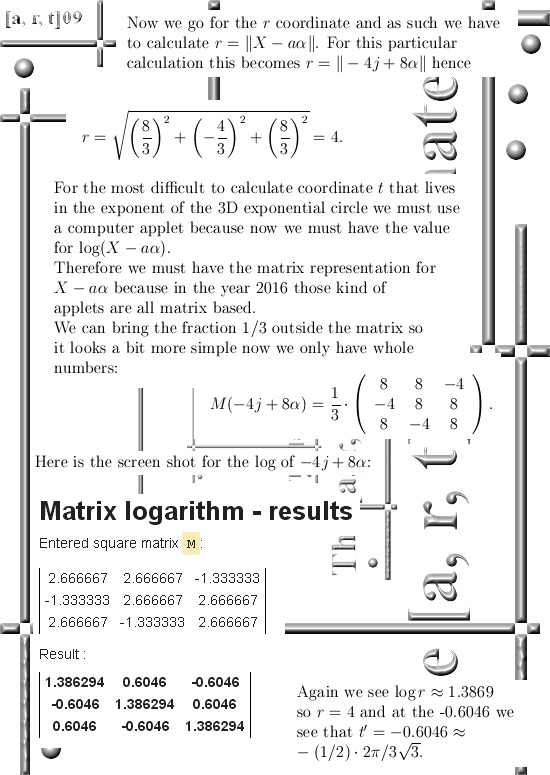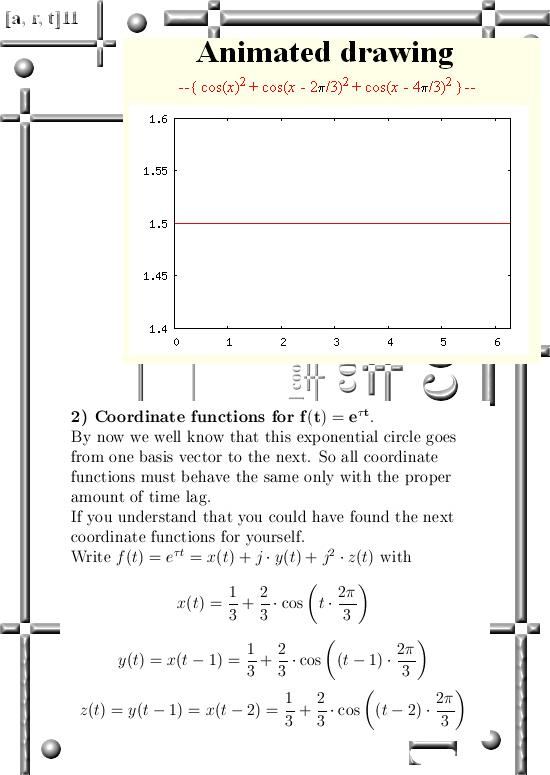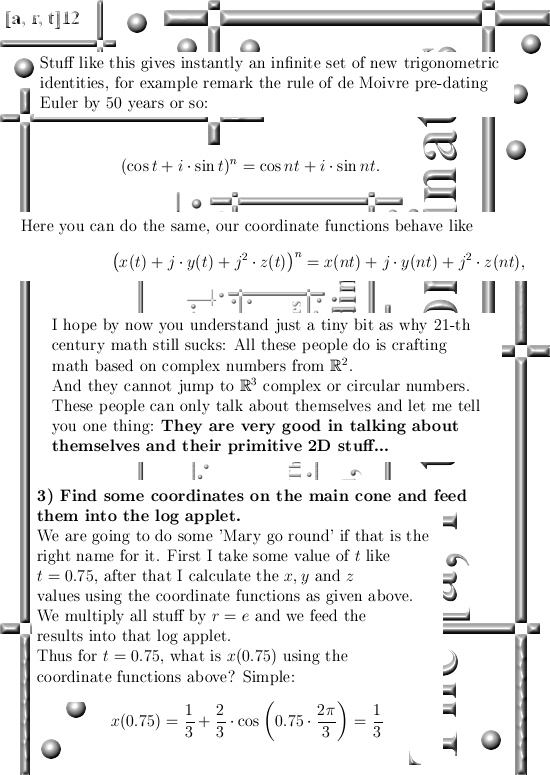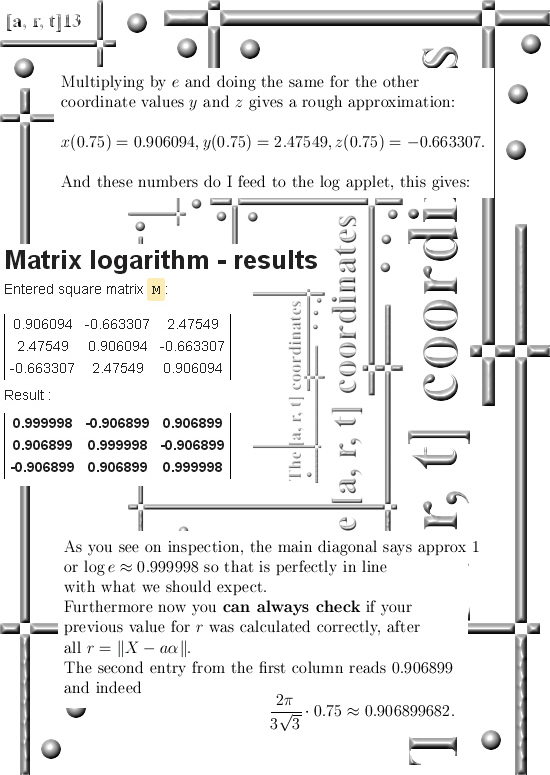About a full week late all is now finished. Also there was that problem of the hacked webpage; the third update on the Schrödinger equation was loaded and loaded with all kinds of weird comments. But if you did read those comments you could see the overwhelming majority was not written by humans but were posted by bots.
Anyway in the end even advertisements for online sales of viagra and stuff surfaced so I took an evening to see if this could be repaired. For the time being it is not possible to post comments although before it was also impossible but that was due to an unknown technical fault…
__________
In this update we dive into the [a, r, t] coordinate system and this is very similar to using polar coordinates in the complex plane only in 3D we are moving a half-cone along a line and as such sweep through the entire 3D space. In short it goes like this:
With a we control how far the cone is moved from the origin,
with r we denote the distance from a particular point X to the top of the cone and finally,
with t we figure out how much we need to rotate stuff using an applet for the log of a matrix.
I also give once more the coordinate functions of the exponential circle so that you are able to find coordinates on the main cone (that has the origin as it’s top) for yourself.
Without prove I also give a new de Moivre formula, the original de Moivre formula is from about 50 years before Euler so after 3 centuries there is a bit of moving forward on that detail.
I also give a rather strange looking sum of squares of cosine functions that add up to 1.5; the three cosine functions all differ by 120 degrees or 2pi/3 if you want.
It is important to remark I did my best to keep it as simple as possible so I also concentrate on a few worked examples so it is not just theory but also how to find these new coordinates. In relation to other posts like the Schrödinger equations posts, I think this new coordinate system is definitely of interest to people from quantum physics and chemistry that try to calculate those atomic and molecular orbitals.
This update is relatively long: 14 pictures of size 550 x 775 pixels and for the first time I use unshrunk jpg pictures because year in year out the bandwidth of internet connections is still rising fast so why remove fine detail from jpg pictures any longer?
__________
I hope you learn something new, here are the pics:
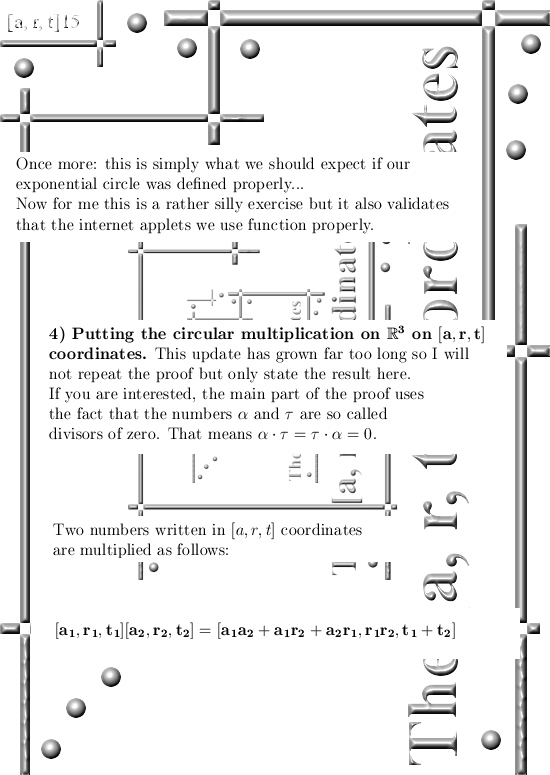 Ok, that was it. For myself speaking I more or less expect everything to be the same:
Ok, that was it. For myself speaking I more or less expect everything to be the same:
Professional math professors from around the globe will keep on talking about their own research and just how important it is to use complex numbers from the complex plane.
A few useful links:
De Moivre’s formula
https://en.wikipedia.org/wiki/De_Moivre’s_formula
And a good applet for the logarithm of matrix representations is also handy:
http://calculator.vhex.net/function-index/linear-algebra
http://calculator.vhex.net/function-index/linear-algebra
And last but not least is a proof for the latest formula above: the circular multiplication on the [a, r, t] coordinates can be found on the other website:
From 06 May 2016 : On the length of the product of two 3D numbers.
http://kinkytshirts.nl/rootdirectory/just_some_math/3d_complex_stuff04.htm#06May2016
Let’s leave it with that. Till updates.
